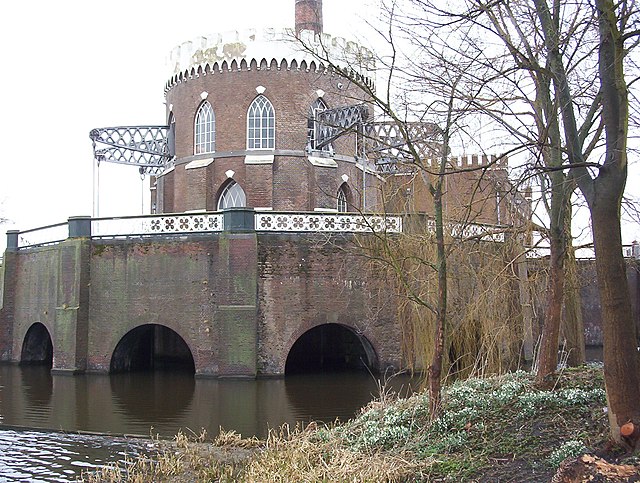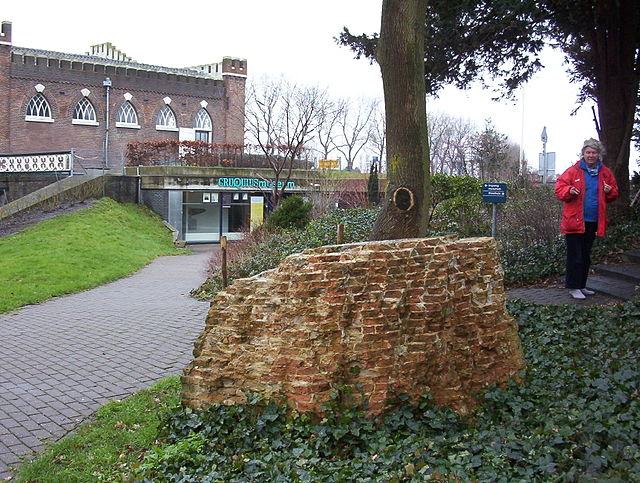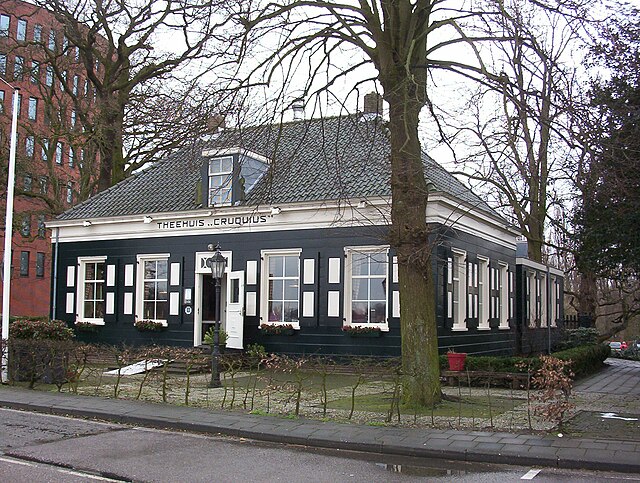The Museum De Cruquius occupies the old Cruquius steam pumping station in Cruquius, the Netherlands. It derives its name from Nicolaas Kruik (1678–1754), a Dutch land-surveyor and one of many promoters of a plan to pump the Haarlemmermeer dry. Like many well-educated men of his time, he latinized his name to Nicolaus Samuel Cruquius. During his lifetime the issue of the Haarlem Lake and how to pump it dry was international news, as the following excerpt from the Virginia Gazette on 31 May 1751 illustrates:"By a private letter from Rotterdam, we are told, that the Dutch Engineers, in their Plan for draining the lake of Haerlem, proposed to employ 150 mills for three Years, and had computed the Expence at a Million and Half of Florins, but that a German, who had been long employed in the Mines of Hungary and Hartz, had proposed to drain it with 50 machines, in 15 months, at a far less Expence; and that he has been ordered to erect one of those Machines, which, if it shall be found to execute what he has asserted, his Proposal will be immediately accepted."

Back of Cruquiusmuseum, showing the beams of the pumping engine and the 9 meter drop in water level from the Spaarne river
Museum De Cruquius, seen from Heemstede side of Cruquius bridge over the Ringvaart
Cruquiusmuseum entrance, showing piece of foundation from first steam mill in the Netherlands
Café next to Cruquiusmuseum, former residence of steam mill foreman
Nicolaas Samuelszoon Kruik, also known as Klaas Kruik and Nicolaes Krukius, was a Dutch land surveyor, cartographer, astronomer and weatherman. He is commemorated by the Museum De Cruquius.
Rijnlandshuis, the Gemeenlandshuis where Cruquius lived and worked in Spaarndam
Diagram showing the distance of the planets to the earth in 1732, also showing a complete lunar eclipse and a partial solar eclipse in that year






